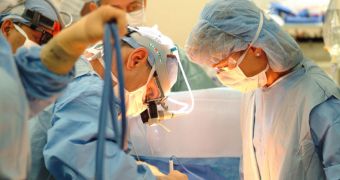Researchers announce the development of a new series of compounds, which have the ability to promote post-surgery recovery, by sealing wounds faster and more efficiently. The new approach was developed by experts at the NewYork-Presbyterian Hospital/Weill Cornell Medical Center in New York City, who collaborated closely with biomedical engineers at the Cornell University, in Ithaca. The team reveals that some of the compounds used for the new treatment are also found in sunless tanning sprays, and that they can be formed into a sticky gel.
According to a new paper detailing the findings, which appears in the May 31 issue of the esteemed publications Proceedings of the National Academy of Sciences (PNAS), the two main components of the sticky gel are polyethylene glycol and a polycarbonate of dihydroxyacetone (MPEG-pDHA). The investigators believe that using this substance would eliminate the need for one of the most common post-op therapies, namely seroma cleansing. As tumors are extracted, the hollow space that is left behind generally tends to fill with seroma fluid.
When this happens, a temporary drain needs to be placed at that location, and this procedure is unfortunately oftentimes unavoidable. What the New York investigators plan to do is use the new substance as a medical superglue to help them reconstruct the hollow spaces in such a manner that seroma accumulation is prevented. “The new substance would act to glue together the hole left behind to prevent seroma buildup,” says NYPH/WCMC plastic surgeon Dr. Jason Spector. He was also the coauthor of the PNAS paper.
The new glue holds great advantages over similar products already in use. For one, it's made of naturally-occurring compounds, rather than being derived from animals. This means that the glue itself is safer for human use, and takes a lot less time to heal and seal cavities. “DHA is a compound that is naturally produced in the body. The glue is broken down, or metabolized, and then safely removed by the body,” says Cornell Department of Biomedical Engineering (DBE) School of Chemical and Biomolecular Engineering expert Dr David Putnam. He was also the senior author of the investigation.

 14 DAY TRIAL //
14 DAY TRIAL //